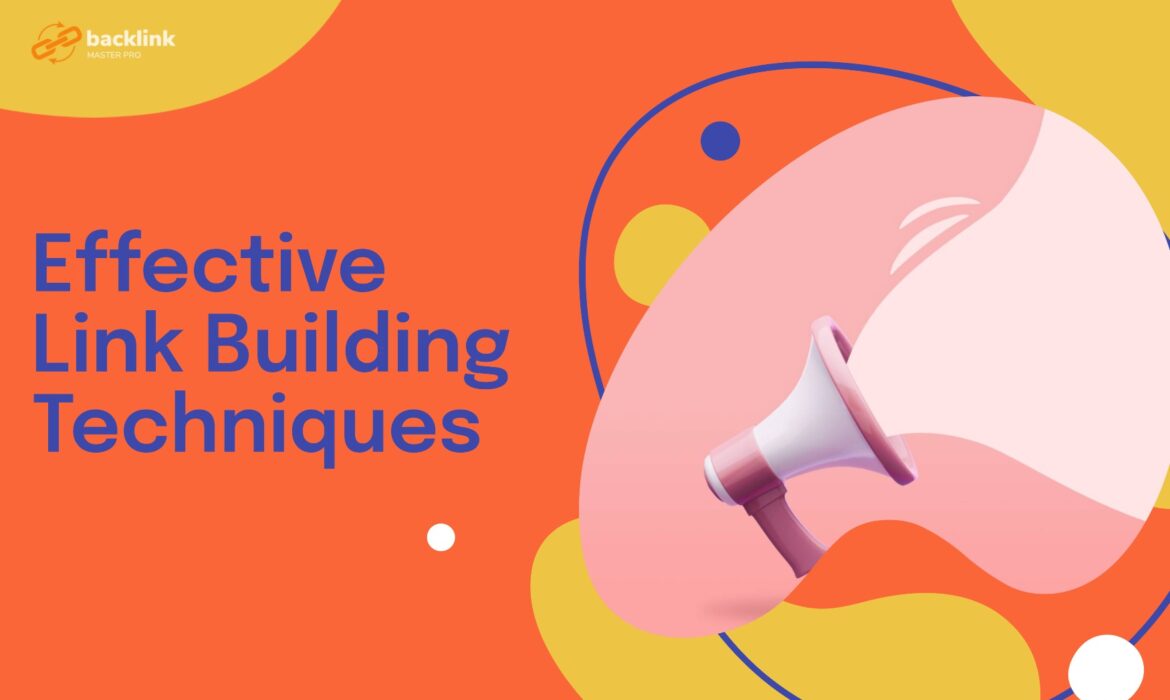Introduction to Link Building
Link building is an essential component of Search Engine Optimization (SEO). It involves acquiring hyperlinks from other websites to your own, making your website more visible and accessible to both search engines and users. Join us as we delve into the strategic world of effective link building techniques.
The Importance of Link Building for SEO
Link building is crucial for SEO because search engines like Google use links to crawl the web. More importantly, they see these links as endorsements or votes of confidence for your website, which can significantly enhance your site’s ranking on Search Engine Results Pages (SERPs).
Key Principles for Effective Link Building
Effective link building is not just about quantity but also quality. The relevance and authority of the sites you’re linking to and from can dramatically impact your SEO ranking. Establishing good relationships with reputable websites, creating compelling content, and targeting the right audience are all key principles for successful link building.
13 Effective Link Building Techniques
1. Guest Blogging: Reaching Out with Your Expertise
Guest blogging stands as a stellar method for link building. Here, you create high-quality, relevant content to feature on a website within your industry, but not your own. It gives you a chance to impart your knowledge, interact with new people, and increase the number of backlinks pointing to your website. Always ensure that you’re collaborating with reputable websites. It not only enhances your image as an authority but also guarantees the quality of your backlinks.
2. Broken Link Building: Solving Problems, Gaining Backlinks
The broken link building strategy is an effective SEO technique where you search for broken links on other websites, particularly those relevant to your content. Once you locate a broken link, reach out to the site owner, highlight the issue, and propose your content as a superior replacement. Remember, this method works best when your suggested content aligns closely with the original broken link.
3. Infographics: Visualize to Magnetize
Infographics transform complex information into easily digestible, visual formats. Their interactive nature makes them highly shareable, potentially attracting a wealth of backlinks. Create captivating and unique infographics, embed them on your site, and observe as other websites share your content and link back to your site.
4. Content Outreach: Amplify Your Voice
Content outreach entails promoting your high-quality content to influencers, bloggers, or other industry figures relevant to your niche. When they acknowledge the worth of your content, they might refer to it on their platforms, thereby creating valuable backlinks. Keep your outreach messages personalized and demonstrate how your content adds value to their audience.
5. Social Media Promotion: Share to Gain
Social media platforms offer an excellent avenue for content promotion and backlink acquisition. Instigating others to share your material on various platforms and interacting with your audience through active sharing of your content might result in backlinks.
6. Unlinked Brand Mentions: Seize the Opportunity
In instances where your brand gets mentioned on another website without a link, you’ve got an unlinked brand mention. By contacting the author or site owner, request them to insert a link to your site, effectively converting a mere mention into a beneficial backlink.
7. Competitor Backlink Analysis: Learn and Implement
This strategy involves analyzing your competitor’s backlink profile to pinpoint potential link opportunities for your site. Tools such as SEMrush or Ahrefs can assist you in finding who’s linking to your competitors. With this data, you can reach out to these sites and propose your content as a resource, aiming to gain similar backlinks.
8. Digital PR: Build, Earn, and Grow
Digital PR centers on fostering relationships with online influencers, journalists, and bloggers to secure media coverage, high-quality backlinks, and social media mentions. This might involve pitching story ideas, initiating creative campaigns, or providing unique data that they can cite, all linking back to your site.
9. Linkable Assets: Create to Attract
Linkable assets are pieces of high-quality content on your site that others naturally wish to link to. These could be comprehensive guides, original research, interactive tools, or captivating infographics. The main goal is to produce content that offers your readers extraordinary value.
10. Link Reclamation: Recover and Preserve
Link reclamation revolves around identifying broken or lost links that once led to your site. These are opportunities missed due to website restructuring or page removal. By contacting the site owners, you can request them to reinstate the broken link, thereby reclaiming your lost backlink.
11. Steal Links from Inferior Web Pages: Superiority Wins
If your content is more comprehensive, current, or engaging than similar content on other sites, you have an opportunity. Contact the websites linking to the inferior content, and suggest your page as a more valuable alternative. This tactic necessitates strong research skills and a persuasive outreach strategy.
12. Create and Distribute Infographics: Engage and Share
Beyond creating infographics for your site, you can also circulate them through various online channels. These might include social media platforms, infographic directories, or relevant blogs. As other sites pick up your infographic, they’ll generally link back to your site, offering credit.
13. Keep Track of Your Backlinks: Measure to Improve
You may monitor the sites that link to you, the precise pages they link to, and how those links perform by using SEO tools like Google Search Console, Ahrefs, or SEMrush. This insight can guide your link-building strategy by identifying the types of content attracting the most links.
Measuring the Success of Link Building Efforts
The success of your link building efforts can be measured by the increase in the number of high-quality backlinks, improved website rankings, and a boost in web traffic. Remember that the quality of links, not the quantity, is most important.
Conclusion
Link building is a powerful strategy to boost your SEO ranking. By implementing these effective link building techniques, you can build digital bridges that connect your website to a wider audience, improving your online visibility, and enhancing your website’s authority and trustworthiness.



